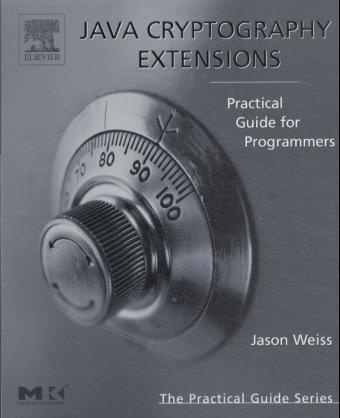Read more
Informationen zum Autor By Jason Weiss Klappentext For many Java developers and software engineers! cryptography is an "on-demand" programming exercise! where cryptographic concepts are shelved until the next project requires renewed focus. In "Java Cryptography Extensions!" cryptography is discussed at the best level for developers! without overwhelming them with unimportant details. Zusammenfassung Discusses cryptography at the level that developers need to know to work with the JCE and with their own applications. This book covers the architecture of the JCE! symmetric ciphers! asymmetric ciphers! message digests! message authentication codes! digital signatures! and managing keys and certificates. Inhaltsverzeichnis Chapter 1: Understanding Javas Cryptographic Architecture Chapter 2: Working with Symmetric Ciphers Chapter 3: Working with Asymmetric Ciphers and Key Agreement Protocols Chapter 4: Message Digests! Message Authentication Codes! and Digital Signatures Chapter 5: Managing Keys and Certificates Bibliography
List of contents
Chapter 1: Understanding Java's Cryptographic Architecture . Chapter 2: Working with Symmetric Ciphers . Chapter 3: Working with Asymmetric Ciphers and Key Agreement Protocols . Chapter 4: Message Digests, Message Authentication Codes, and Digital Signatures . Chapter 5: Managing Keys and Certificates . Bibliography
Report
"For a long time, there has been a need for a practical, down-to-earth developers book for the Java Cryptography Extension. I am very happy to see there is now a book that can answer many of the technical questions that developers, managers, and researchers have about such a critical topic. I am sure that this book will contribute greatly to the success of securing Java applications and deployments for e-business." --Anthony Nadalin, Java Security Lead Architect, IBM
"I think it's worth having a copy of this book in the company library." - Dr Dobb's Journal, November 2004
"No other resource presents so concisely or effectively the exact material needed to begin utilizing the JCE." Stefan Meyer (Berlin) Zentralblatt MATH 1060, November 2005

